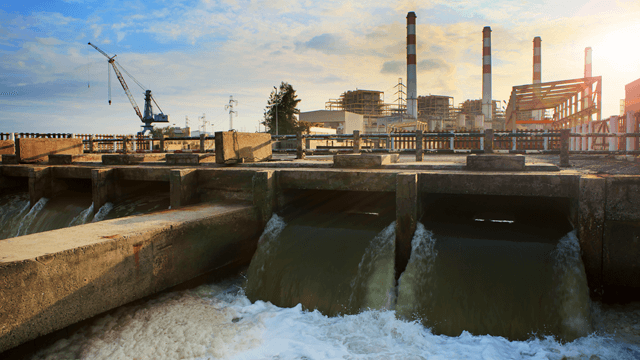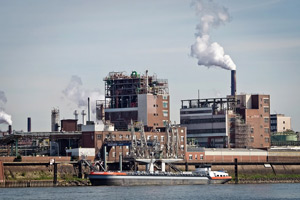Developments and Advances in Hazardous Waste Water Treatment Technologies
The landscape of industrial wastewater treatment is going through a transformative change, driven by technologies that enhance both performance and sustainability. Emerging technologies, such as membrane layer bioreactors and microbial fuel cells, are redefining contaminant elimination processes while contributing to power generation. In addition, source healing techniques are gaining grip, lining up with round economy concepts. As regulative criteria develop, the combination of AI and device learning into wastewater management systems assures to guarantee and improve operations compliance. The full implications of these advancements raise important inquiries about their scalability and long-term impact on sector methods.
Introduction of Drainage Treatment Technologies
Wastewater treatment modern technologies include a series of methods developed to eliminate pollutants from commercial effluents prior to their launch right into the setting. These innovations are essential for maintaining ecological balance and making sure conformity with ecological laws. The main categories of wastewater treatment consist of physical, chemical, and biological approaches, each offering distinct purposes based upon the nature of the contaminants existing.

Organic treatment techniques use bacteria to degrade organic matter, making them specifically effective for organic-rich effluents. Techniques like triggered sludge and biofilm reactors harness the all-natural deterioration capabilities of microorganisms, resulting in considerable decreases in biochemical oxygen demand (BOD)
Advanced Purification Methods
Advanced filtering strategies stand for an essential evolution in the realm of industrial wastewater treatment, improving the efficiency of contaminant removal processes. Industrial Waste Water Treatment. These techniques incorporate a variety of technologies, including microfiltration, ultrafiltration, nanofiltration, and turn around osmosis, which give consecutive obstacles for numerous particle sizes and chemical structures
Microfiltration and ultrafiltration utilize membrane layer systems to get rid of suspended solids, germs, and bigger organic particles, boosting the high quality of effluent before additional therapy. Nanofiltration links the space in between ultrafiltration and reverse osmosis, effectively eliminating organic compounds and divalent ions, hence decreasing the lots on downstream procedures.
Reverse osmosis supplies the highest possible level of filtration by allowing just water and small particles to travel through its semi-permeable membrane layers, making it excellent for redeeming premium water from industrial effluents. Recent improvements in membrane layer technology, consisting of the development of more resilient and fouling-resistant materials, have actually substantially boosted operational effectiveness and lowered prices.
Incorporating these sophisticated filtering methods not just enhances the overall therapy process yet additionally adds to sustainability efforts by enabling water reuse and source healing in industrial setups. (Industrial Waste Water Treatment)
Organic Therapy Advancements

Furthermore, the growth of crafted biological systems, such as membrane layer bioreactors (MBRs), integrates biological treatment with advanced membrane filtering. This assimilation allows for higher effluent high quality and minimized footprint, making it suitable for space-constrained commercial facilities. Innovations in genetically engineered microorganisms have additionally arised, enhancing the biodegradation of particular pollutants, such as drugs and heavy steels, that are typically testing to remove.
Additionally, the implementation of bioaugmentation methods, where helpful germs are introduced to enhance the existing organic therapy processes, has shown promising outcomes in boosting therapy performance. These developments jointly represent a pattern towards even more lasting and effective organic treatment methods that can adapt to the evolving intricacies of commercial wastewater streams. As markets continue to focus on ecological compliance, these biological developments will certainly play an important role in wastewater administration.

Resource Healing Techniques
In commercial settings, the assimilation of source recovery techniques has actually become significantly vital for boosting sustainability and decreasing waste. These approaches focus on extracting important products and power from wastewater streams, thus transforming potential contaminants right into multiple-use sources.
One famous technique is nutrition healing, where nitrogen and phosphorus, typically existing over in wastewater, are caught and transformed right into fertilizers. This not just reduces ecological effects but additionally supplies a circular economic situation option for agricultural applications. Additionally, technologies such as anaerobic digestion enable the conversion of natural waste into biogas, an eco-friendly energy resource that can offset fossil fuel usage in industrial operations.
Moreover, advanced purification and membrane layer modern technologies promote the healing of commercial by-products such as steels and salts. These recovered products can be rehabilitated right into production processes, decreasing the need for virgin resources.
Future Trends in Drainage Administration
As sectors progressively prioritize sustainability, the future of wastewater management is set to undergo significant improvements. Technical innovations, such as expert system and device understanding, will certainly make it possible for extra effective surveillance and management of wastewater systems. These modern technologies can forecast upkeep needs, maximize treatment procedures, and boost decision-making, inevitably decreasing operational expenses and ecological influence.
In addition, the integration of round economic climate concepts will certainly play a crucial role in wastewater monitoring. Industries are expected to move in the direction of systems official website that not just treat wastewater however also recoup useful sources, such as nutrients, water, and power. This transition will certainly reduce waste and advertise the reuse of products, straightening with international sustainability goals.
Emerging therapy strategies, such as membrane bioreactors find and progressed oxidation processes, will additionally improve the efficiency of wastewater treatment, permitting for better effluents ideal for reuse. Furthermore, governing frameworks are likely to progress, highlighting stricter requirements for wastewater discharge and encouraging sectors to take on ingenious treatment options.
Conclusion
In final thought, the evolution of commercial wastewater therapy modern technologies demonstrates a substantial change towards improved efficiency and sustainability (Industrial Waste Water Treatment). Developments in advanced purification strategies, organic therapies, and resource recuperation methods highlight the industry's commitment to environmental stewardship.
The landscape of industrial wastewater treatment is undergoing a transformative change, driven by technologies that improve both effectiveness and sustainability.Wastewater therapy modern technologies incorporate a range of approaches created to get rid of pollutants from industrial effluents before their launch into the environment.Utilizing the power find here of biological procedures has actually led to significant technologies in the therapy of industrial wastewater.Additionally, the implementation of bioaugmentation strategies, where advantageous microorganisms are presented to enhance the existing organic therapy procedures, has shown appealing outcomes in boosting treatment performance. These innovations jointly symbolize a fad in the direction of more lasting and efficient organic treatment methods that can adjust to the evolving intricacies of industrial wastewater streams.